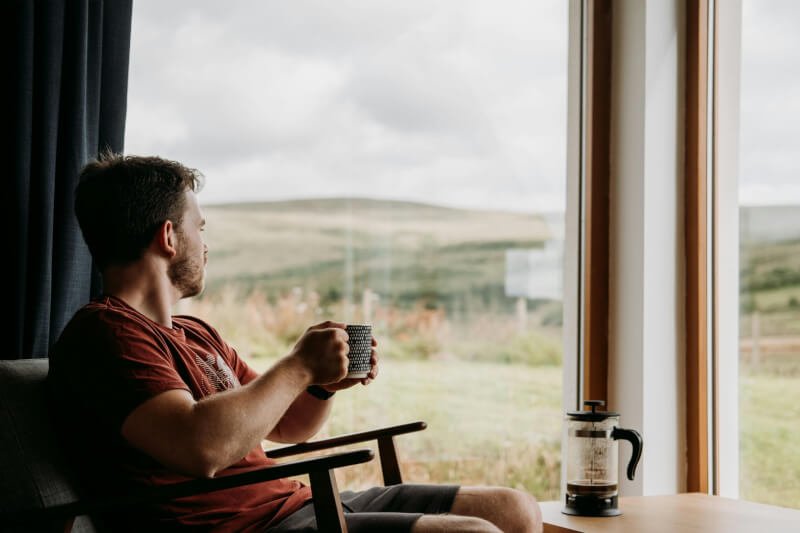Tea lovers rejoice! In this exciting article, you will uncover the fascinating world of tea brewing and the effect that different water temperatures have on its flavors. Whether you prefer a subtle and delicate cup or a bold and robust infusion, this exploration into the realm of water temperatures promises to enhance your tea experience like never before. So, grab your favorite tea leaves and embark on a journey that will leave you with a newfound appreciation for the delicate art of tea brewing.
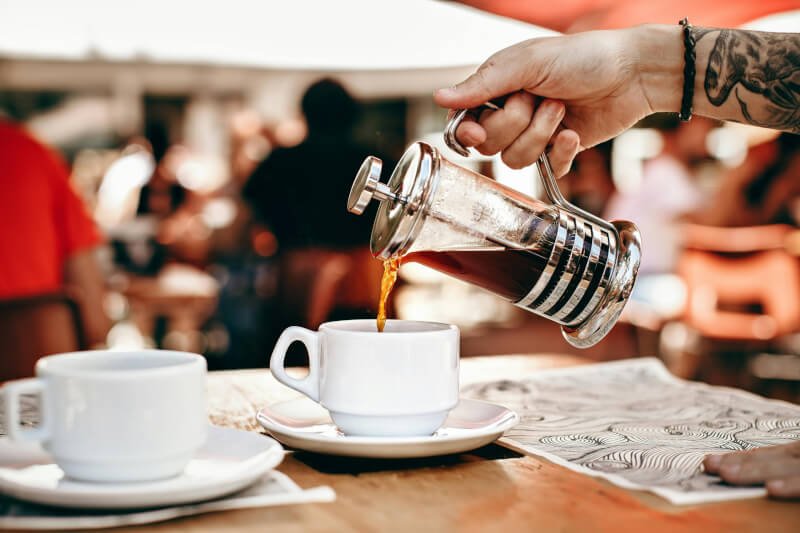
Factors Affecting Tea Brewing
When it comes to brewing the perfect cup of tea, there are several factors that can greatly affect the taste, aroma, and overall experience. One of the most crucial factors is the water temperature used during the brewing process. In addition to water temperature, the type of tea, steeping time, and water quality also play significant roles in the final outcome of your tea. Understanding and mastering these factors will help you achieve the perfect cup of tea every time.
Water Temperature
The water temperature is perhaps the most important variable when it comes to brewing tea. Different types of tea require different water temperatures to bring out their unique flavors and characteristics. Using water that is too hot or too cold can result in a bitter or weak cup of tea. By understanding the optimal temperature range for each type of tea, you can ensure that you are bringing out the best flavors in your brew.
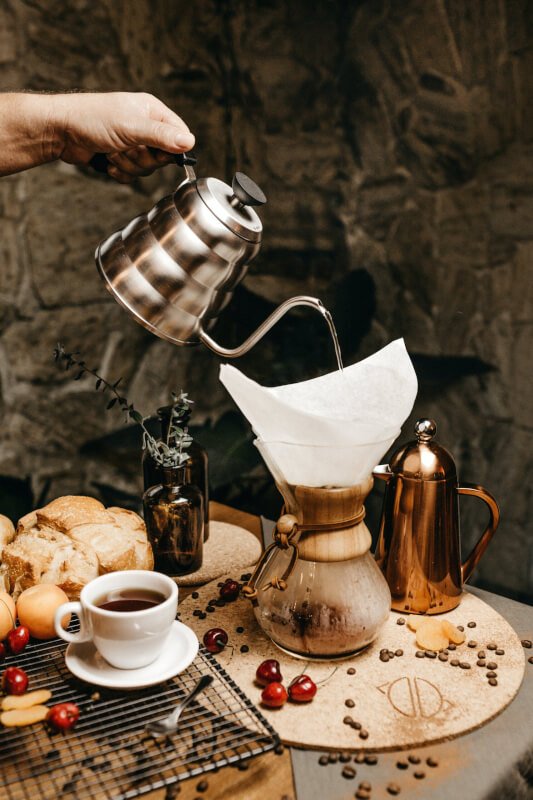
Tea Type
Tea comes in various types, each with its own set of characteristics and flavors. The most common types of tea include black tea, green tea, white tea, oolong tea, and herbal tea. Each type of tea requires different brewing techniques and water temperatures. Let’s explore the optimal temperature range for each type:
Black Tea
Black tea is known for its robust flavor and dark color. To fully bring out its rich taste, it is recommended to use water that is between 195°F and 205°F (90°C and 96°C). This temperature range allows the tea leaves to fully release their flavors, resulting in a bold and flavorful cup of tea.
Green Tea
Green tea is delicate and requires more care when it comes to brewing. To avoid a bitter taste, it is best to use water that is between 160°F and 180°F (71°C and 82°C). This lower temperature range allows the delicate tea leaves to infuse slowly, resulting in a smoother and more refreshing cup of green tea.
White Tea
White tea is the least processed of all tea types and is known for its subtle and delicate flavors. To fully appreciate the delicate flavors, use water that is between 165°F and 180°F (74°C and 82°C). This temperature range allows the tea leaves to release their natural sweetness and light floral notes.
Oolong Tea
Oolong tea is a partially oxidized tea that falls between black and green tea in terms of flavor and processing. To achieve the perfect balance of flavors, steep oolong tea using water that is between 180°F and 200°F (82°C and 93°C). This temperature range brings out the unique floral and fruity notes in oolong tea.
Herbal Tea
Herbal teas are made from various plants and herbs, such as chamomile, peppermint, or rooibos. Unlike traditional tea, herbal teas do not come from the Camellia sinensis plant and can withstand a wide range of water temperatures. However, a general guideline is to use water that is between 200°F and 212°F (93°C and 100°C) to fully extract the flavors from the herbs.
Steeping Time
The length of time that tea is steeped also plays a role in the final flavor of the brew. Steeping time refers to the amount of time the tea leaves are submerged in hot water. Steeping for too long can result in a bitter or over-extracted taste, while steeping for too short a time can lead to a weak and underwhelming cup of tea.
To achieve the optimal flavor extraction, it is important to follow the recommended steeping times for each type of tea. Generally, black teas should steep for 3-5 minutes, green teas for 1-3 minutes, white teas for 2-4 minutes, oolong teas for 3-4 minutes, and herbal teas for 5-7 minutes. Following these guidelines will ensure that you get the perfect balance of flavors from your tea.
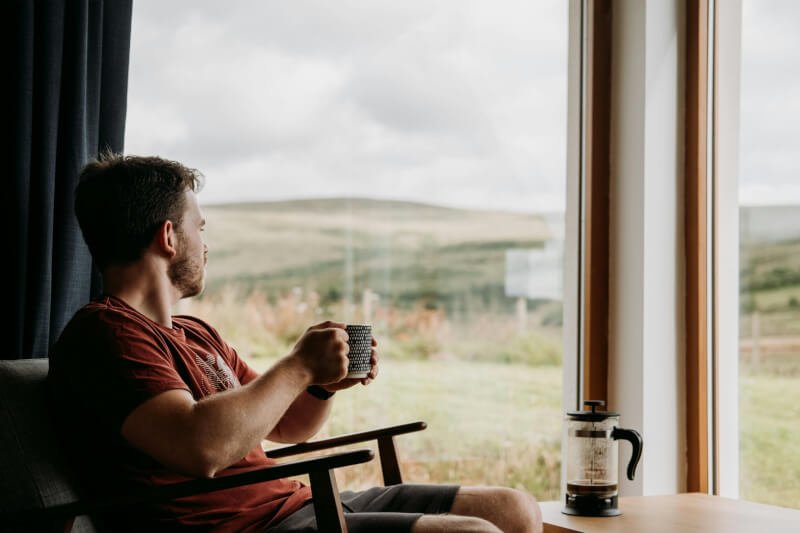
Water Quality
While the temperature and type of water used in tea brewing are important, the quality of the water can also greatly impact the taste of your brew. Water that contains impurities or a high mineral content can result in a less than ideal cup of tea. It is best to use fresh, filtered water for the best brewing results. This will ensure that you are starting with a clean slate and allowing the true flavors of the tea to shine through.
Optimal Temperature Range for Different Tea Types
Now that we have a better understanding of the factors that affect tea brewing, let’s delve deeper into the optimal temperature range for each type of tea.
Black Tea
Black tea, with its bold and robust flavor, is best brewed using water that is between 195°F and 205°F (90°C and 96°C). This temperature range allows the tea leaves to fully release their flavors, resulting in a strong and full-bodied cup of tea. Steep black tea for 3-5 minutes to achieve the perfect balance of flavors.
Green Tea
Green tea should be brewed at a lower temperature compared to black tea to avoid a bitter taste. The ideal water temperature for green tea is between 160°F and 180°F (71°C and 82°C). Steep green tea for 1-3 minutes to extract the delicate flavors and aromas.
White Tea
White tea, known for its subtle flavors and delicate aroma, is best brewed using water that is between 165°F and 180°F (74°C and 82°C). Steep white tea for 2-4 minutes to allow the flavors to fully develop and create a mild and refreshing cup of tea.
Oolong Tea
Oolong tea falls between black and green tea in terms of flavor and processing. To achieve the best results, steep oolong tea using water that is between 180°F and 200°F (82°C and 93°C). This temperature range brings out the unique floral and fruity notes in oolong tea. Steep oolong tea for 3-4 minutes to get the perfect balance of flavors.
Herbal Tea
Unlike other types of tea, herbal teas can withstand higher water temperatures. Use water that is between 200°F and 212°F (93°C and 100°C) to fully extract the flavors from the herbs. Steep herbal tea for 5-7 minutes to get the most out of the botanical ingredients.
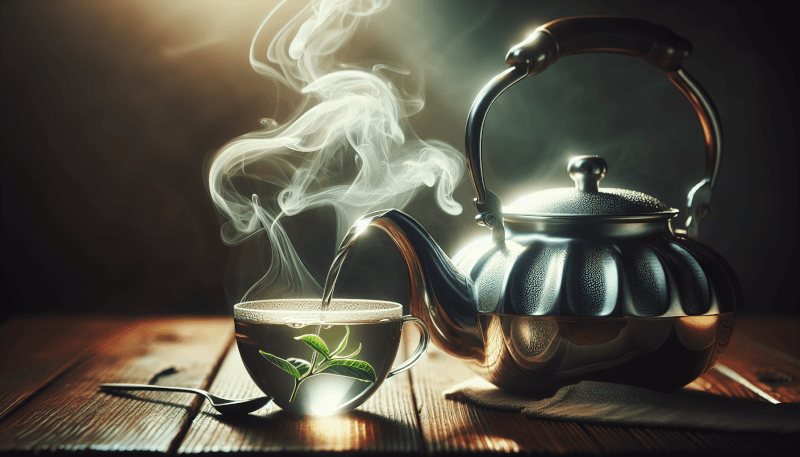
Effects of Water Temperature on Tea Brewing
Now that we know the optimal temperature ranges for different tea types, let’s explore the effects of water temperature on the tea brewing process.
Extraction of Flavor Compounds
Water temperature plays a crucial role in extracting the flavor compounds from the tea leaves. Using water that is too hot can result in an over-extracted brew, where the flavors become too strong and bitter. On the other hand, using water that is too cold may result in an under-extracted brew, where the flavors are weak and lack depth. Finding the right water temperature for each type of tea ensures that the flavors are extracted in the optimal way, resulting in a well-balanced and flavorful cup of tea.
Bitterness and Astringency
Water temperature also affects the level of bitterness and astringency in tea. Bitterness is often a result of over-extraction, which can occur if the water temperature is too high or if the steeping time is too long. Astringency, the drying or puckering sensation in the mouth, can also be influenced by water temperature. Higher temperatures tend to increase the astringency of tea. By using the recommended water temperature range for each type of tea, you can avoid excessive bitterness and astringency, resulting in a smooth and enjoyable cup of tea.
Caffeine Content
Water temperature can also affect the caffeine content of your tea. Caffeine is more soluble in hot water, so using higher water temperatures can result in a higher caffeine content in your brew. If you prefer a lower caffeine content, you can opt for lower water temperatures or shorter steeping times. However, it’s important to note that the impact of water temperature on caffeine content is relatively minimal compared to other factors, such as the type of tea and the ratio of tea to water.
Color and Appearance
Water temperature can influence the color and appearance of your brewed tea. Higher temperatures tend to extract more color from the tea leaves, resulting in a darker and more vibrant brew. Lower temperatures may produce a lighter and more delicate color. Depending on your preference, you can adjust the water temperature to achieve the desired color and visual appeal of your tea.
Brewing Tea with Cold Water
While hot water is the traditional method for brewing tea, cold water brewing has gained popularity in recent years. Cold brew tea offers a unique and refreshing alternative to hot tea and is particularly favored during the summer months.
Cold Brew Tea Method
To brew tea using the cold brew method, simply combine tea leaves and cold water in a container and let it steep for an extended period, usually anywhere from 6 to 12 hours. The cold water extracts the flavors from the tea leaves gradually, resulting in a smoother and less bitter brew.
Pros and Cons
One of the main advantages of cold brew tea is its lower levels of bitterness and astringency. The slow extraction process and lower water temperature help to minimize these undesirable elements, resulting in a smoother and more balanced cup of tea. Cold brew tea is also less likely to become over-extracted, which can sometimes happen with hot water brewing.
On the other hand, the cold brew method does require more time compared to traditional hot water brewing. If you’re in a hurry and craving a quick cup of tea, the cold brew method may not be the most convenient option. Additionally, cold brew tea may have a milder flavor compared to hot brewed tea, as the lower water temperature extracts fewer flavor compounds.
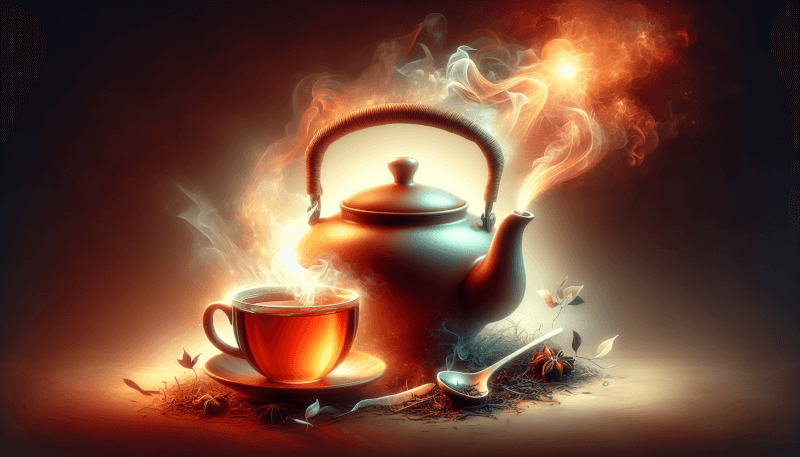
Brewing Tea with Warm Water
While cold and hot water brewing methods are commonly used, brewing tea with warm water offers a middle ground between the two. Warm water brewing is a versatile method that can be adjusted to suit different types of tea and personal preferences.
The Ideal Temperature Range for Warm Water Brewing
Warm water brewing generally refers to using water that is between 140°F and 160°F (60°C and 71°C). This temperature range allows for a quicker extraction of flavor compared to cold brewing while still avoiding the bitterness and astringency associated with higher temperatures.
Pros and Cons
One of the main advantages of warm water brewing is its versatility. You can adjust the water temperature based on the type of tea you’re brewing and your personal taste preferences. Warm water brewing allows for a faster extraction of flavors compared to cold brewing, making it a suitable method when you’re short on time but still want a smoother brew compared to hot water brewing.
However, warm water brewing may not bring out the full range of flavors and complexities that hot water brewing can achieve. The lower water temperature may result in a milder brew, particularly for teas that require higher temperatures for optimal flavor extraction.
Brewing Tea with Hot Water
Hot water brewing is the traditional and most commonly used method for brewing tea. It allows for the quickest extraction of flavors and is suitable for most types of tea.
The Ideal Temperature Range for Hot Water Brewing
Hot water brewing typically refers to using water that is between 176°F and 205°F (80°C and 96°C). This temperature range ensures a quick and thorough extraction of flavors, resulting in a robust and flavorful cup of tea.
Pros and Cons
Hot water brewing is favored by many tea enthusiasts for its ability to extract the full range of flavors from tea leaves. The higher water temperature allows for a more intense extraction, resulting in a vibrant and aromatic cup of tea. Hot water brewing is also the quickest method and is suitable for all types of tea.
However, the higher water temperature can also increase the risk of over-extraction and bitterness, especially if steeping times are not closely monitored. Some delicate teas, such as green and white teas, may also become bitter if brewed with hot water. It’s important to follow the recommended water temperature range for each type of tea to ensure the best results.
Brewing Tea with Boiling Water
Boiling water brewing is another widely used method that offers a quick and efficient way to brew tea. Boiling water extraction is particularly favored for black teas, as well as some herbal teas that can withstand higher water temperatures.
The Ideal Temperature Range for Boiling Water Brewing
Boiling water brewing refers to using water that is at or close to its boiling point, which is typically 212°F (100°C). This high water temperature ensures a rapid extraction of flavors, making it ideal for stronger teas like black tea.
Pros and Cons
One of the main advantages of boiling water brewing is its speed and efficiency. The high water temperature allows for a quick extraction of flavors, making it a convenient method for those who are short on time. Boiling water brewing is particularly well-suited for black teas, as the high temperature helps to fully release their bold flavors and aromas.
However, boiling water brewing may not be suitable for all types of tea. Delicate teas like green and white teas may become bitter and lose their delicate flavors if brewed with boiling water. It’s important to consider the recommended water temperature range for each type of tea to avoid over-extraction and unwanted bitterness.
Experimenting with Water Temperature
To truly understand the impact of water temperature on tea brewing, it can be fun and educational to conduct experiments using different water temperatures. By varying the water temperature for the same type of tea or comparing different teas at the same temperature, you can explore how temperature affects the flavors, aromas, and overall experience of your tea.
Varying Water Temperature for the Same Tea Type
Brewing the same type of tea using different water temperatures allows you to witness firsthand how temperature affects the flavor profile. Start by brewing a cup of tea using the recommended water temperature and note the flavors, aroma, and overall experience. Then, try brewing another cup using slightly higher or lower water temperature and compare the differences. This experiment will help you understand the optimal temperature range for your preferred taste and allow you to make adjustments accordingly.
Comparing Different Tea Types at the Same Temperature
Another interesting experiment is to compare different types of tea brewed at the same water temperature. This experiment allows you to understand how the inherent characteristics of each tea type interact with the water temperature. Brew each tea type using the same water temperature and observe the differences in flavor, aroma, and appearance. This experiment can deepen your appreciation for the unique qualities of each tea type and help you discover your personal preferences.
Tips for Achieving the Right Water Temperature
Achieving the right water temperature for tea brewing can sometimes be a challenge, particularly if you don’t have access to a thermometer or a kettle with temperature control. Here are some tips to help you achieve the optimal water temperature:
Using a Thermometer or Kettle with Temperature Control
Investing in a kitchen thermometer or an electric kettle with temperature control can greatly simplify the process of achieving the right water temperature. A thermometer allows you to accurately measure the water temperature, while a kettle with temperature control allows you to set the desired temperature and maintain it throughout the brewing process. These tools provide peace of mind and help ensure that you’re brewing your tea at the optimal temperature.
Boiling and Cooling Techniques
If you don’t have access to a thermometer or temperature-controlled kettle, there are boiling and cooling techniques you can use to estimate the water temperature:
Boiling Water Method: Bring the water to a rolling boil and let it sit for a few minutes to allow the temperature to drop slightly. This method is suitable for black teas and herbal teas, which can withstand high water temperatures.
Cooling Method: Boil water and then let it cool for a specific duration based on the tea type you are brewing. For example, if you’re brewing green tea, boil the water and let it cool for about 5 minutes before use. This method allows you to estimate the water temperature based on the cooling time.
It’s important to note that these techniques are not as precise as using a thermometer or temperature-controlled kettle, but they can serve as a handy workaround when precise temperature control is not available.
Conclusion
Water temperature plays a crucial role in the art of tea brewing. By understanding the optimal temperature range for each type of tea, you can carefully extract the flavors and create a well-balanced and enjoyable cup of tea. Factors such as tea type, steeping time, and water quality also contribute to the final outcome of your brew. Whether you prefer a cold, warm, hot, or boiling water brewing method, experimenting with water temperature allows you to explore and appreciate the intricate flavors and nuances that each tea has to offer. So go ahead, grab your favorite tea leaves and start brewing with the confidence that you can achieve the perfect cup of tea every time.

